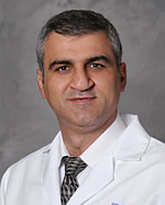Abstract Aim: To evaluate clinical outcomes and identify factors predictive for recurrence in patients with 1988 (FIGO) stage IA uterine endometrioid carcinoma. Patients and Methods: Patients who underwent hysterectomy for stage IA carcinoma were identified in our database. Fisher's exact and χ2 tests were used to identify factors that influenced outcome. Survival plots were generated according to Kaplan-Meier product-limit method and the log-rank test was used to determine significance. Results: A total of 121 patients were identified. Eighty-seven percent (n=105) had tumor FIGO grade 1, 9% (n=11) grade 2, and 4% (n=5) grade 3 tumors. Six patients (5%) experienced recurrence. The 5-year recurrence-free survival (RFS), disease-specific survival (DSS) and overall survival (OS) were 93%, 95%, and 85%, respectively. On univariate analysis, tumor FIGO grade 2/3 was strongly associated with tumor recurrence (p=0.003), DSS (p=0.016), and OS (p=0.023). The 5-year RFS, DSS, and OS were 65.1%, 73.9%, and 63.9% respectively for patients with grade 2 and 3 tumors, which were significantly less than the corresponding rates of 97.5% (p≤0.0001), 98.6% (p=0.001), and 87.7% (p=0.024) for patients with grade 1 tumors. Conclusion: In this large cohort of patients, RFS, DSS and OS were excellent. Patients with FIGO grade 2/3 tumors had worse outcomes compared to those with grade 1 tumors. Therefore, while most patients with stage IA disease do not need adjuvant treatment after hysterectomy, our results suggest that patients with higher-grade tumors have an increased likelihood for recurrence and they may benefit from counseling regarding adjuvant therapies.
Endometrial carcinoma (EC) is the most common gynecological malignancy in the United States, with 47,130 estimated new cases in 2012 (1). Total abdominal hysterectomy with bilateral salpingo-oophorectomy (TAHBSO), with or without pelvic or para-aortic lymphadenectomy is curative in most patients with early EC, with an overall recurrence rate of 11-13% (2).
Adjuvant treatment is utilized in selected patients with early-stage EC to reduce the rate of tumor recurrence and improve disease-specific survival (DSS). The overall recurrence-free survival (RFS) for patients with early-stage EC is excellent, approaching 90% (3, 4). This depends on a number of factors, such as the stage of the disease, histology, tumor grade and depth of myometrial invasion (3, 5).
Two major randomized studies showed that adjuvant radiation treatment after hysterectomy reduced the rate of recurrence in patients with early-stage EC (6, 7). However, patients with tumor confined to the endometrium 1988 (FIGO) stage IA were not included in these studies secondary to the low risk of recurrence. In patients without myometrial invasion, the 5-year overall survival (OS) is excellent, reaching 91% according to Quinn et al. (8). However, there are limited data examining prognostic factors and patterns of failure for this group of patients.
Considering the highly significant prognostic impact of FIGO grade on recurrence (7), patients with uterine endometrioid carcinoma grade 3 with no myometrial invasion were included in one of the largest prospective studies (3). However, the number of patients with stage IA in that study was limited. Therefore, we aimed to study the clinicopathological factors associated with favorable outcomes and to determine factors that may predict recurrence in patients with uterine endometrioid carcinoma confined to the endometrium.
Patients and Methods
After Institutional Review Board approval, we reviewed the medical records of 775 patients in our prospectively maintained database of patients with EC. One hundred and twenty-one patients with 1988 FIGO stage IA uterine endometrioid adenocarcinoma were identified. All patients underwent TAH-BSO, with or without peritoneal cytology and/or pelvic or para-aortic lymph node dissection at our institution between 1985 and 2011. The medical records were retrospectively reviewed to collect demographic, clinical, and pathological data. Data on adjuvant therapy, recurrence, and salvage treatment were also collected. Patients with mixed and non-endometrioid histologies, as well as patients with any myometrial invasion, were excluded from this study.
The following factors were assessed: age, race, FIGO tumor grade, cytology, lower uterine segment (LUS) involvement, and lymphovascular space invasion (LVSI). Fisher exact and χ2 tests were used to identify factors that influenced outcome. Due to the low frequency of events, multivariate analysis (MVA) was not included. Survival plots were generated according to the Kaplan Meier product-limit method calculated from the date of hysterectomy, and the log-rank test was used to determine significance. A p-value of <0.05 was considered to be statistically significant.
Results
. . .Continue to read rest of article (PDF).









